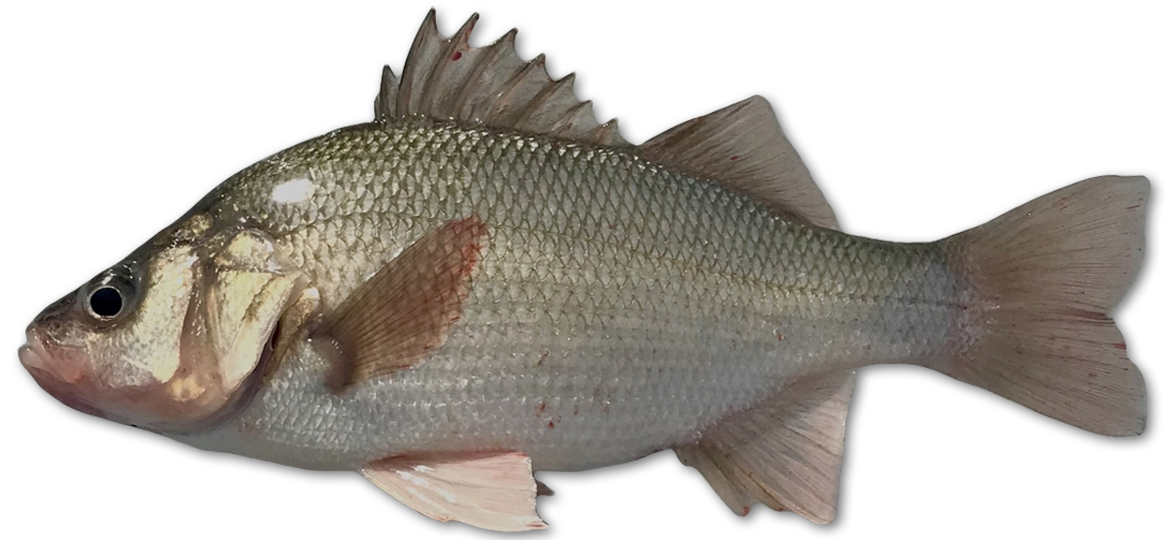
White perch (Morone americana) were originally found in the St. Lawrence River and along the Atlantic coastal plain from Maritime Provinces to South Carolina. They were later introduced to the Midwest, New England, and the Great Lakes. White perch have been illegally introduced to some Vermont waters and are common in Lake Champlain and the Connecticut River.
White perch have a deep oval body and a toothless terminal mouth. Their dark gray to olive brown upper body shades to silver and then to white on their belly. While their maximum size has been recorded up to 22.8 inches, they generally range between 9 to 10 inches in Lake Champlain and live, on average, from five to seven years.
Habitat
White perch are tolerant of a variety of habitats including many coastal areas where fresh water mixes with salt water. In Vermont, white perch are limited to the waters where they were illegally introduced, however, in these waters they do compete with native fish species over available habitat.
Reproduction
White perch spawn in late spring to early summer in temperatures around 50 to 60°F. Mature adults move up tributary rivers to choose a spot to deposit their eggs, which can be fertilized and deposited over a variety of substrates. Females can lay anywhere from 16,000 to 320,000 adhesive eggs, which are not provided nests or parental care. Eggs will hatch in 4 to 4.5 days at 59°F.
Diet
White perch are opportunistic feeders and can switch food sources depending on availability. They have been known to outcompete native fish species for food and consume fish eggs and small fish, which can impact other fish populations.
Management
Fisheries management for white perch is focused on educating the public about the documented impacts of white perch on native fish populations and relaying information about how to prevent any additional spread of this species throughout Vermont. It is illegal to transport live white perch away from any waterbody.
Status
White perch are not native to Vermont and are considered an invasive species.
Fun Facts
- Common names: sea perch, silver perch, narrow-mouthed bass, perch, bass, baret.
- White perch were first observed in Lake Champlain in 1984.
- This species is actually not a perch but instead a “temperate bass” and are more closely related to striped bass than any other “perch” species.
